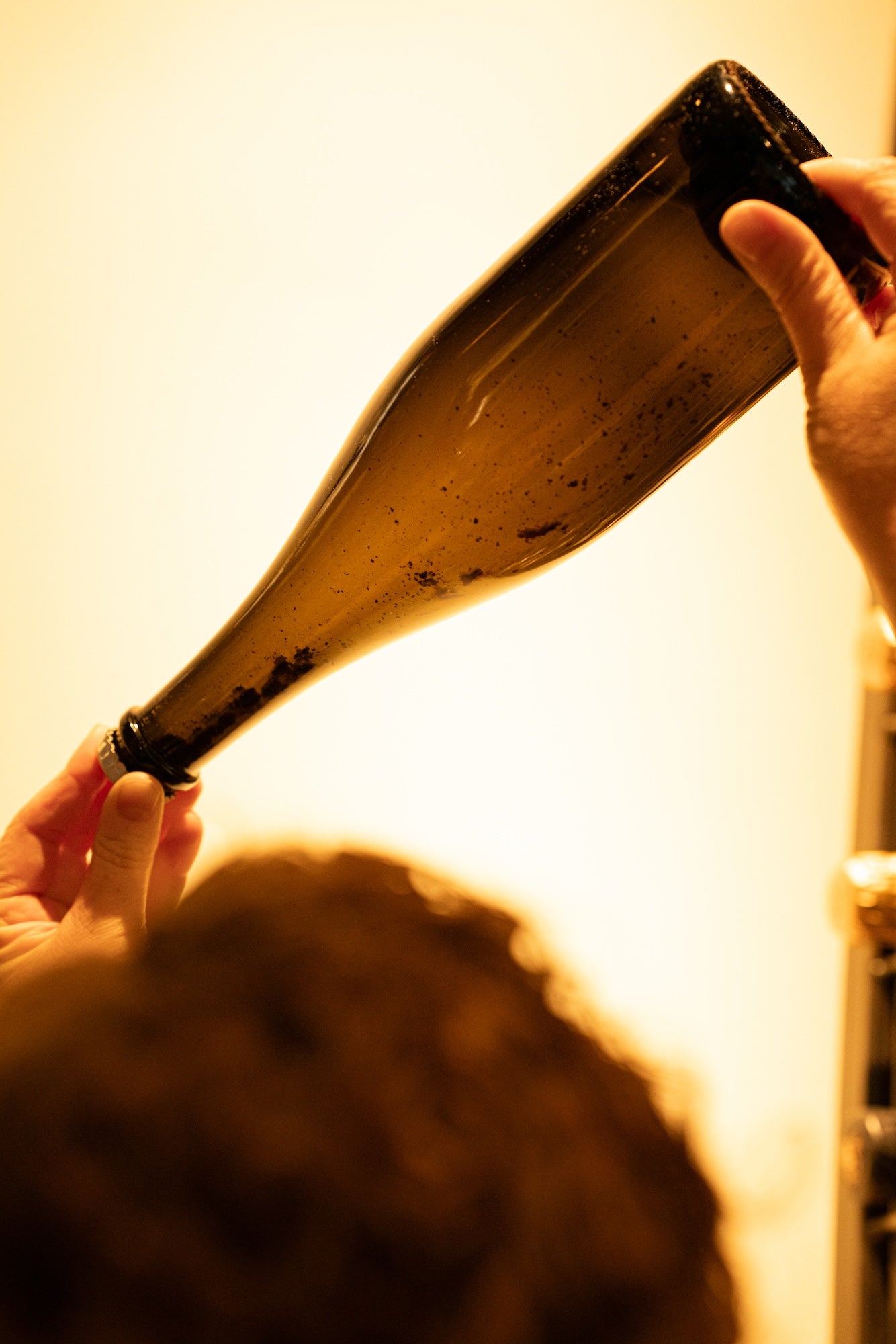Malolactic fermentation, or Malolactic fermentation (MLF) is an important but optional process in the production of Champagne, a sparkling wine produced in the Champagne region of France. MLF is a secondary fermentation that converts malic acid to lactic acid, resulting in a smoother and more complex flavor profile.
During the making of champagne, the wine undergoes multiple fermentations. Below we explain the steps the wine undergoes during the process.
Primary fermentation: After the grapes are harvested and pressed by hand, the juice is fermented in stainless steel tanks, oak barrels or amphorae. This primary fermentation converts the sugars in the grape juice into alcohol and produces a high-acid base wine known as vin clair. During this initial fermentation, a winemaker can choose to block, initiate, or allow malolactic fermentation to occur spontaneously.
Now let's look at the role of malolactic fermentation in Champagne production:
Why do some Champagne producers choose malolactic fermentation and how does it work? Lactic acid bacteria, usually Oenococcus oeni, are introduced into the base wine. These bacteria convert the harder malic acid (from green apples) into softer lactic acid (from milk), reducing the acidity of the wine.
The decision to use MLF in Champagne depends on the style and preferences of the producer. MLF can contribute to a softer, rounder mouthfeel and create more complex aromas and flavors in the wine, such as butter, cream and nutty notes. It can also increase the wine's ability to age and develop tertiary flavors.
However, not all Champagne producers choose MLF. Some prefer the higher acidity and fresher fruit characteristics of the base wine, as the absence of MLF can result in a fresher, more vibrant style of Champagne.
In short, malolactic fermentation is an optional step in Champagne production. It allows winemakers to adjust the acidity, texture and flavor profile of the wine, contributing to the different styles available in the world of Champagne.
Blending: Champagne production often involves blending multiple grape varieties, such as Chardonnay, Pinot Noir and Meunier, to create a balanced and complex wine. However, nowadays we see more and more champagnes made from one grape variety, such as these fine blanc de blancs from pure Chardonnay or a blanc de noirs from Pinot Noir.
Addition of yeast and sugar: The blended base wine is then bottled and a mixture of yeast and sugar known as the liqueur de tirage is added to initiate the second fermentation. The bottles are closed with a crown cap or a natural cork and the second fermentation takes place in the bottle. During this fermentation, bubbles are created in the wine.
Maturation on lees: After the second fermentation, the bottles are allowed to mature horizontally on the lees, which are the dead yeast cells that remain after the fermentation process. This maturation period is known as "sur lie" and lasts a minimum of 15 months for a non-vintage champagne and a minimum of 36 months for a vintage champagne. Many champagne houses choose to age their bottles longer, which results in a smaller bubble and a more refined taste. In some cases, houses choose to store bottles 'sur pointe', i.e. vertically. This almost only happens during very long ripening.
Riddling: To remove the yeast sediment from the bottles, a process called riddling or rémuage is carried out in preparation. The bottles are gradually turned and tilted so that the bottle ends vertically and the sediment can settle in the neck of the bottle. Traditionally this was done by hand, but nowadays automated machines called Gyropalettes are often used.
Disgorgement: Once the sediment has collected in the neck of the bottle, the neck is frozen and the (crown) cork is removed. The pressure in the bottle forces the frozen plug of sediment out. This process is called disgorgement. Nowadays this is also usually done with machines. In exceptional cases, houses choose to do this by hand, or á la volée.
Addition of liqueur d'expédition: After the disgorgement, a small amount of wine and optionally sugar, the so-called liqueur d'expédition, is added to determine the sweetness level of the Champagne. The amount of added sugar determines the style of the Champagne, such as brut nature, extra brut, brut or demi-sec. With a brut nature no sugar is added, making it the driest style of champagne.
l'Atelier du Champagne



Share:
Meet The Champagne Grower